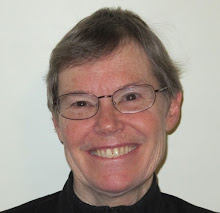I thank my cousin Andrea Brewster for bringing my attention to an article on the history of the Underground Railroad in Massachusetts. She quoted a passage that mentions our ancestor Dr. Andrew Nichols. We've known that he was an abolitionist, but this article provides specific information about his house in South Danvers as one of the stations, and his role in anti-slavery work.
The article, THE UNDERGROUND RAILROAD IN MASSACHUSETTS by Wilbur H. Siebert, was published in the Proceedings of the American Antiquarian Society in April 1935, pages 25-100. The section about Danvers stations begins on page 53, and I'll quote the first paragraph here:
A fourth line of fugitive travel out of Boston ran some eight miles north to Saugus, where Benjamin Franklin Newhall and his wife Dorothy befriended the wayfarers. The next station on this line was South Danvers (now Peabody), where Dr. Andrew Nichols, a graduate of the Harvard Medical School and head of the Free Soil Party in Danvers, extended hospitality to refugees, as well as to anti-slavery lecturers. His house now stands on Main Street near the square, back of the Essex Club. His tombstone in Monumental Cemetery, at Peabody, bears the inscription, "Erected by the Friends of Humanity to Humanity's Friend." At Danversport, formerly called "The Neck," the daughter of John Page, Esq., of Danvers, and wife of Dr. Ebenezer Hunt, once a candidate of the Liberty Party for lieutenant governor, gave "the strength and grace of her womanhood to the service of the poor and oppressed." As anti-slavery societies early took shape in Danvers, it became an Underground centre with a group of workers, including Mr. and Mrs. D. Brooks Baker, who lived in a cottage that stood at the corner of Elm and Putnam streets.
There is additional Danvers information on page 54. Note: you can read the entire article online. After reading the Danvers part, I turned to the beginning and read all 75 pages. What a history! I had not realized how extensive the underground railroad activity had been in Massachusetts. And, this summary only includes known, documented parts of this vast secretive movement to aid fugitive slaves.
I'm glad to learn of such wide-spread support for anti-slavery work.
Elsewhere in the American Antiquarian Society publications, and other online archives, you can read reports of slavery in Danvers. Some include specifics about slave-owning families in Danvers. Anti-slavery activism was controversial, of course. See my 2020 blog entry with quote about difficulties some relatives recalled. Those challenges were minor compared to the terrible experiences of the enslaved. I've just finished Colson Whitehead's novel The Underground Railroad (2016). He creatively invents an imaged underground RR, with real rails and engines, but powerfully conveys real dramas and traumas of the enslaved. His book gives me a greater appreciation of the role of the station agents and other activists who risked their lives trying to aid people escaping slavery.

1 comment:
A note of caution about Siebert's article. A reader recommends that we "examine very carefully what evidence Siebert uses for reporting on the locations for underground railroad stops. Nowadays, his work is viewed as 'romanticizing' the URR, certainly making it appear more organized than it really was."
I've been informed that Mr. Siebert's papers are available online at https://www.ohiomemory.org/digital/collection/siebert
Here are additional relevant resources:
Dr. Henry Louis Gates explains the myths of the Underground Railroad in this posting: https://www.pbs.org/wnet/african-americans-many-rivers-to-cross/history/who-really-ran-the-underground-railroad/
David Blight has written about how the URR myths came to be. See his books, Race and Reunion: The Civil War in American Memory (2002) and Passages to Freedom:
The Underground Railroad in History and Memory (2004).
Post a Comment